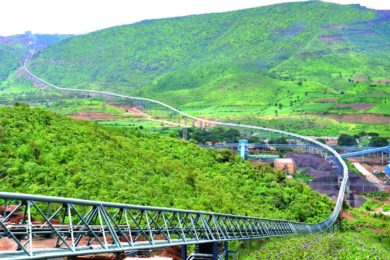East Asia Minerals (EAS) believes that the changes proposed under the new Indonesian Mineral and Coal Mining Law are largely positive for the company and considers that Indonesia’s new mining law is a globally competitive framework within which to operate. “It will provide the company with excellent security of tenure, and a well defined framework within which to grow the company. “
The draft of the new law was approved by the Indonesian legislature on December 16, 2008, and was signed by the President on January 12, 2009. Upon its enactment, the law will replace the current law on Principal Provisions of Mining (Law No 11/1967. However, the existing implementation regulations of the Law No 11/1967 shall remain applicable to the extent that such implementing regulations do not contravene with the New Mining Law. The
new regulations required for the implementation of the New Mining Law will take several months to draft.
There are several major changes in the New Mining Law compared with the Old Mining Law. Under Old Mining Law mineral exploration and mining activity in Indonesia was conducted under either a Mining Authorization (KP) and/or a Contract of Work (CoW), which was issued by the Central Government. EAS currently operates under several CoW applications, and KPs.
The New Mining Law grants permits through the issuance of the mining license or IUP. The IUP is granted in two stages, namely the Exploration IUP and the Operation Production IUP. The New Mining Law guarantees that the holder of the Exploration IUP will be consecutively granted with the Production Operation IUP as the continuance of its business activity.
Under Old Mining Law an Exploration KP was granted for three years, followed by an Exploitation KP for 30 years, extendable for ten years twice. The Exploration IUP for the metal minerals may be granted for the maximum period of eight years and the subsequent Production Operation IUP will be granted for 20 years, extendable for ten years twice. Thus total tenure will be shortened by five years; however, the exploration term has been extended by five years. The Exploration IUP for metal minerals can grant an area of 5,000 to 100,000 ha. Hence large areas are available to prospective explorers. The Operation Production IUP grants a maximum area of 25,000 ha. EAS considers that the changes to term and size of tenure are unlikely to impact upon its future operations and are sufficient for all foreseeable mining activities.
IUPs can be granted by the Mayor/Municipal Official, Governor, or Minister, depending on the location of mining area. This is a departure from the previous Mining Law, wherein all exploration and mining licenses were issued by the Central Government. EAS says it “has long been positioning itself for this eventuality and has excellent relationships with all levels of Government in Indonesia.”
The Exploration IUP for metal minerals mining will be granted by way of public auction. This may well be a significant disincentive to new entrants to Indonesia. However, under the New Mining Law CoW applications submitted at least one year prior to the enactment of the New Mining Law, where the applicant has obtained a principal license (izin prinsip) or the preliminary investigation permission (surat ijin penyelidikan pendahuluan), will be honoured and treated as an IUP application without the public auction requirement. Similarly, existing KPs will be automatically converted to IUPs. Hence EAS believes “that its large and hugely prospective land position in Indonesia will be converted to the new IUP system automatically.”
Furthermore, the company believes that direct foreign ownership of its tenements will be allowed under the New Mining Law; however there may be some requirement for divestment to an Indonesian entity, much in the same way as there were such requirements under the Old Mining Law.
EAS has gold and copper exploration properties in Indonesia, and uranium exploration properties in Mongolia. In Indonesia it has a 70 to 85% interest in six advanced gold and gold-copper properties located in Aceh Province, Sumatra, and Sangihe Island, North Sulawesi. Two of these, the Sangihe (Binebase-Bawone) and Barisan 1 (Abong) gold projects are being drilled to define NI43-101 compliant resources.








